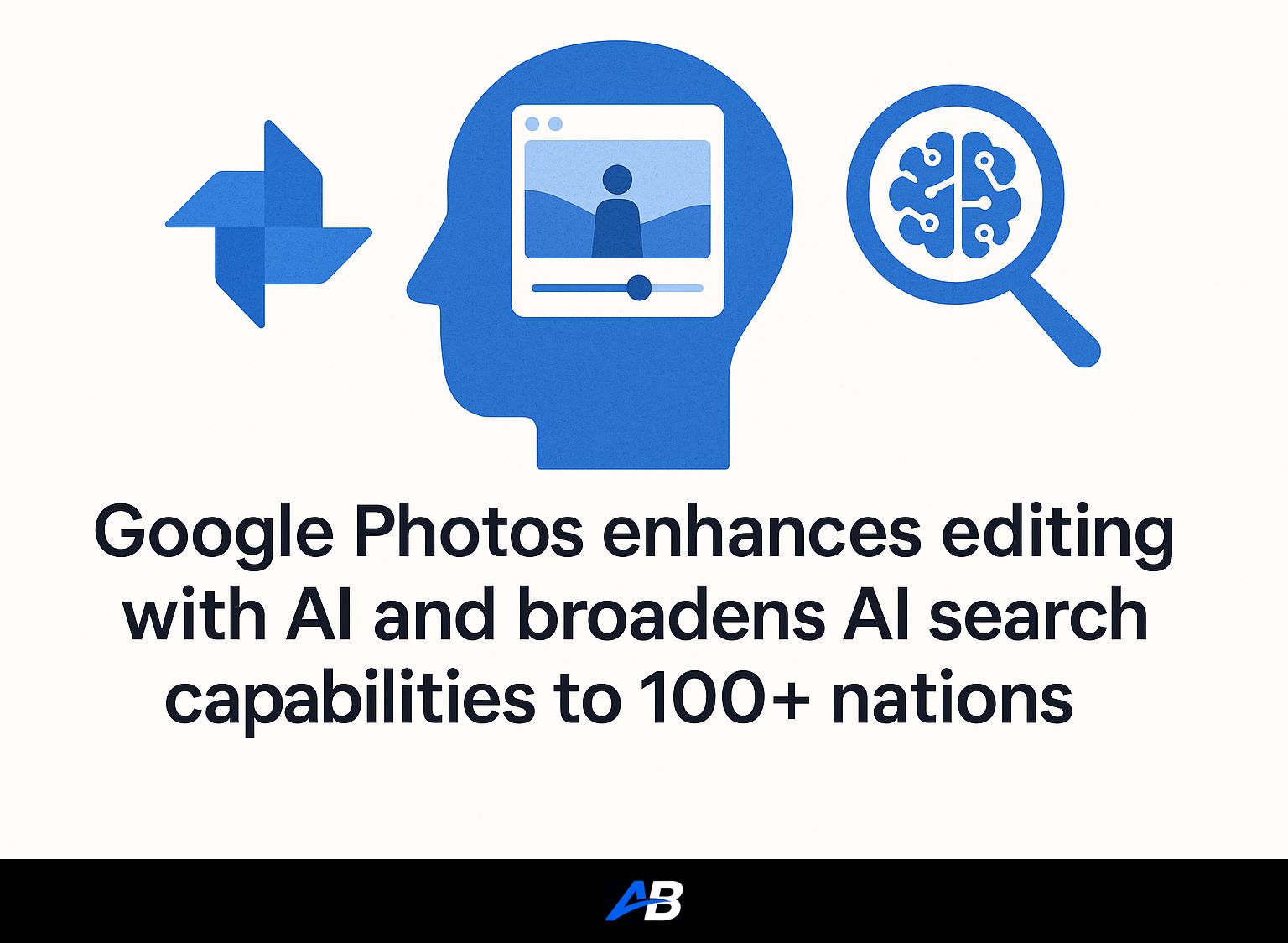Google Photos has unveiled an array of innovative AI-centric features aimed at enhancing photo editing capabilities and search functionalities, now accessible in over 100 nations.
Short Summary:
- Introduction of AI editing tools powered by Google’s Nano Banana model.
- Expansion of natural language search and a new ‘Ask’ feature for user interaction.
- Availability of pre-designed AI templates for personalized photo transformations.
In an exciting development for photography enthusiasts and casual users alike, Google Photos is stepping up its game by integrating a host of new features backed by its cutting-edge AI model, dubbed “Nano Banana.” Announced recently, this update marks a significant leap in personalized editing and organized search capabilities, designed to cater to users’ varied desires from flawless edits to spontaneous queries about their visual archives.
With the latest enhancements, users can engage with the app in unprecedented ways. One of the most noteworthy additions is the refined version of the “Help me edit” feature. By utilizing natural language processing, users can articulate intricate commands such as,
“Remove Riley’s sunglasses, open my eyes, make Engel smile, and enhance her gaze.”
This is only possible due to Google Photos’ intelligent utilization of its face groups technology, which pulls from user-stored images to tailor edits remarkably closely to how people appear in their existing photo library.
The Nano Banana model doesn’t stop at mere touch-ups, though; it allows for complete restyling of photographs. Users can creatively instruct the AI to redefine their images with quirky prompts like
“paint me as a Renaissance portrait,”
or
“forge a whimsical children’s storybook page from my photo.”
Such transformations are not just artistic but also introspective, allowing users to visualize themselves in new and imaginative ways.
To further encourage creativity, Google has introduced a new section under the Create tab labeled “Create with AI.” This feature, commencing its rollout on Android devices in the U.S. and India, includes pre-defined templates powered by the same Nano Banana AI algorithm. Popular queries like
“put me in a high fashion photoshoot,”
“craft a professional headshot,”
or even
“design a winter holiday card”
can be effortlessly transformed into visual form with just a few taps, enhancing the user experience immensely.
The functional revolution doesn’t end there; Google is also expanding its Ask Photos feature, which permits users to perform searches within their photo collections using ordinary conversational language. In a significant update, this feature is set to roll out across more than 100 countries and will introduce support for 17 new languages, including Arabic, Bengali, French, and Spanish, making it more accessible to a global audience.
Alongside these changes comes the new Ask button that users can tap while viewing any image. This button fosters interactive engagement by prompting conversations about the photograph’s context, pulling related images from the library, and even employing the user’s input to execute edits. This two-way communication showcases Google’s commitment to cultivating a more dynamic, user-friendly interface and allowing users to become more active participants in their content management.
As Google continues to refine the Google Photos app, these developments signal a clear shift towards integrating advanced technology in a manner that amplifies both creativity and usability. Users can find enjoyment not just in preserving memories but also in artistically reimagining them, creating an application that transcends traditional photo editing tools.
The implementation across both Android and iOS ensures that these new functionalities are widely available, and Google is keen on rolling them out progressively, maintaining user engagement at a high level. For photography enthusiasts, these updates offer fascinating possibilities, and for tech lovers, they underscore the essential blend of AI innovation in everyday consumer applications.
Vaibhav Sharda, the founder of Autoblogging.ai, comments on this shift, stating, “The integration of advanced AI capabilities in platforms like Google Photos not only fosters creativity but also mirrors the evolving landscape of digital content creation overall.”
As these features become available, so too does the opportunity for bloggers and content creators to engage with their audiences more profoundly. For those interested in exploring similar AI capabilities, leveraging tools like Autoblogging.ai can streamline content generation, making it easier to produce SEO-optimized articles that resonate with readers. The seamless fusion of AI and creativity can propel content development to new heights as technology continues to evolve.
With Google’s cutting-edge advancements, both casual users and professionals have a vibrant canvas on which to work. Embracing such transformative technologies aligns perfectly with the ongoing trends in the digital space and correlates with the objectives at Autoblogging.ai to simplify and enrich the content creation process. The future of photo editing and content generation will likely involve an intricately woven fabric of AI tools, making it easier than ever for individuals to showcase their storytelling through a myriad of visual formats.
In summary, Google Photos’ new features not only enhance the user experience but underline the powerful capabilities of AI in everyday applications. With visual storytelling on the rise, utilizing platforms that integrate these advancements can greatly benefit anyone looking to make a mark in the content landscape. As technology continues to advance, the intersection of AI and creativity holds infinite possibilities, paving the way for a more dynamic, interactive, and rewarding experience for all users.
Stay updated with the latest on AI advancements and how they can enhance your digital experiences through our dedicated sections on Latest AI News and Latest SEO News.
Do you need SEO Optimized AI Articles?
Autoblogging.ai is built by SEOs, for SEOs!
Get 30 article credits!

